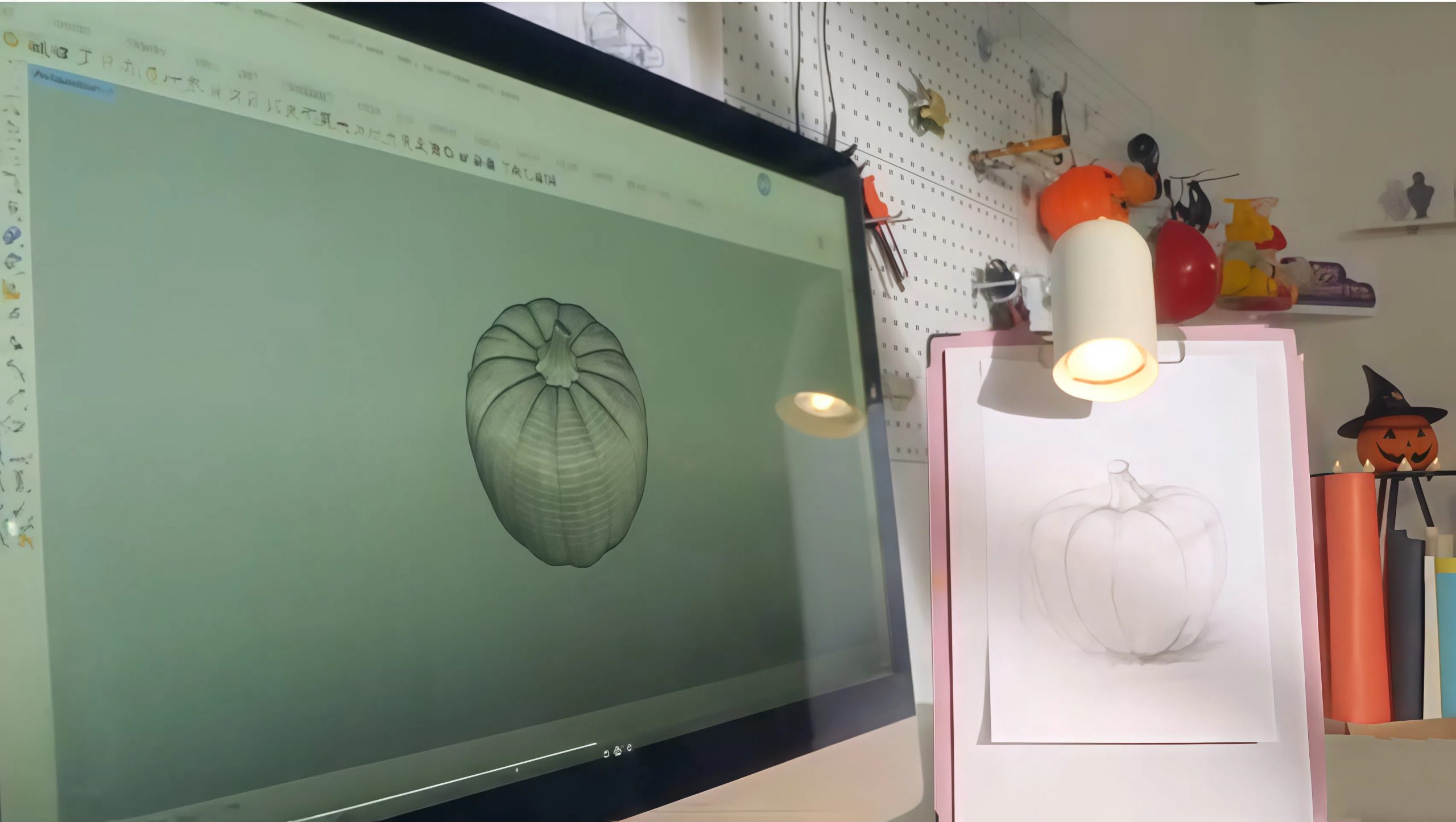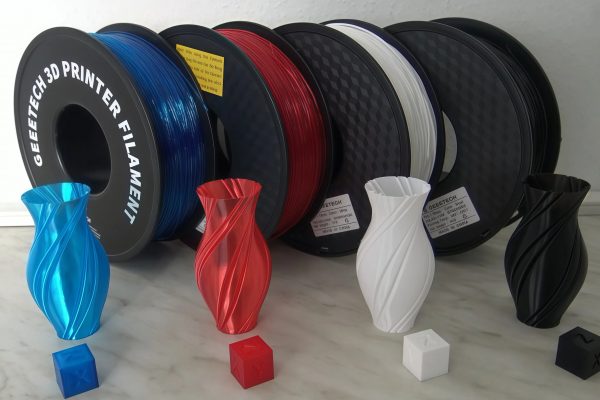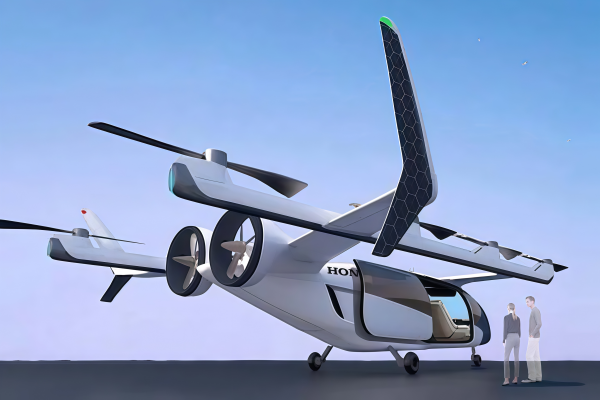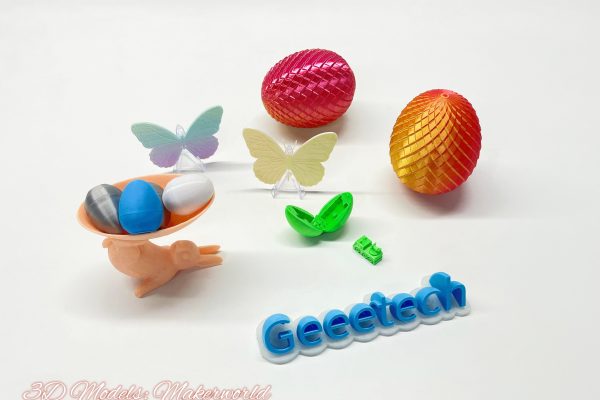Combining new technologies is always an interesting prospect. And when it comes to using AI for 3D printer designs, we are at a point in time where that is no longer a concept but a reality. These days we are seeing more and more 3D models designed by artificial intelligence, so let us take a closer look at what is possible and what the future might look like.
AI Modeling
While generative AI images have been a thing for several years now, getting artificial intelligence to design accurate and usable 3D models has been somewhat more difficult. However, there are now several different services available that are offering users a taste of what is to come, and we expect it will only get better.
Enter Text to Generate 3D Models by AI
It is already possible to use ChatGPT to generate basic 3D models for instance, by simply describing the shape by text in order to get the desired results. It might require some tweaking and trying out different prompts, but this is a free and quick way to prototype ideas.
As you can see from the images above, this actually works as it is already. Depending on the complexity of the models, these prompts alone can be enough to get the desired results, while more advanced users can import the STL into their 3D editing software and further tweak it.
Make 2D Model into 3D STL by AI
Another option is to use a 2D image for generating 3D stl models. This can be another great way to establish a more specific shape, and control the proportions and overall design more accurately compared to text.
As seen from the example above, AI modeling is already possible and available. Over time it is only logical to assume that the entire space will be moving in the direction of ai generated 3D models in general, as it saves valuable time and allows for even more efficient workflows.
AI Enables Eco-Friendly 3D Printing
Using AI in 3D printing can also help address the issue that 3D printing is often criticized for wasting materials. 3D model artificial intelligence generators are generally quite efficient with their overall designs, reducing the need for extra 3D printing materials when printing. Not only can you use AI to generate new designs from scratch, but also make use of the technology in combination with existing files by using topology optimization services.
Normally, optimizing topology is a rather complex and time consuming process for 3D artists, that require them to remove any surplus vectors and faces from their designs, in order to cut down on the actual material required for 3D printing.
AI makes it easier to simply plug in the model to the algorithm, and use mathematical functions that automatically allocate materials within a given design space, find the most efficient force path, remove redundant parts, and ultimately generate organic forms that resemble “natural growth” (such as bones or tree structures).
The manual process is something that professional engineers and 3D modelers have spent a long time perfecting, but for hobby artists and beginners new to using CAD for 3D printing, these AI methods can remove the barrier for entry and help optimize any 3D design quickly and efficiently.
As an example, the NASA satellite bracket was developed precisely using AI-driven topology optimization combined with 3D printing technology which reduced material use by 30-70%. Another example includes SpaceX’s Super Draco engine bracket, which also used AI-driven topology optimization combined with 3D printing technology,which reduce the material processing waste rate from 80% to 0%, material cost from $8000 to $3500.
AI-Optimized Weight Reduction Cases in Aerospace:
Below are a few examples of previous designs being optimized using AI, in order to cut down on weight, save on printing time and reduce the overall complexity of the 3D designs.
| Project/Component | Original Weight | Optimized Weight | Weight Reduction | Material | Source/Year |
| NASA Satellite Bracket | 1.2 kg | 0.5 kg | 58% | Titanium Alloy (Ti-6Al-4V) | NASA, 2023 |
| SpaceX SuperDraco Engine Bracket | 2.1 kg | 0.9 kg | 57% | Inconel 718 | SpaceX, 2022 |
| Airbus Cabin Partition | 30 kg | 19 kg | 37% | Carbon Fiber Reinforced Polymer | Airbus, 2021 |
| GE Aero-engine Bracket | 2.4 kg | 1.1 kg | 54% | Titanium Alloy (Ti-6Al-4V) | GE Aviation, 2023 |
As you can see, the reductions in weight are particularly impressive, resulting in a substantial reduction in material usage and costs. Likewise, for private hobbyists, AI-driven design optimization can also minimize material consumption and shorten printing time ( conserve energy ) — making the overall process more eco-friendly while effectively addressing key challenges in desktop 3D printer.
AI in Manufacturing of 3D Printing
There are also advancements in the manufacturing industry, as AI models for 3D printing are already being used in production lines in different sectors. For now they are primarily being used to improve efficiency and reduce excess materials, which in turn helps develop the tools and services even more.
Optimize Production Process and Improve Production Efficiency
The German car manufacturer BMW uses AI to optimize brake parts for instance, in some cases allowing them to reduce their printing time by 40%, which is an impressive percentage no matter if you are considering a hobby artist looking to print a few models per week, or a large industrial company printing thousands of copies daily.
Other manufacturing companies are exploring the use of innovative software solutions that are AI powered for additive manufacturing, which allows fast and efficient optimisation, and could change the preferred overall method of 3D printing. Whether these technologies will be available to the public is difficult to say right now, as they are currently providing the companies with technological advantages over the competition.
Quality Control and Inspection
AI technology can also be used to scan prints and identify micro-cracks, pores, or dimensional deviations with far greater accuracy than manual detection. This is especially interesting for industrial purposes, where for instance Siemens AI solutions are able to monitor metal printing pools in real time, reducing their defects by up to 90%, a truly remarkable improvement.
AI and 3D Printing in Biomedical Domain
There are also advancements when it comes to 3D model artificial intelligence solutions for the biomedical industries. One invention revolved around AI-guided 3D printing technologies, that are able to help doctors print complex replicas of human organs for surgeons to practice before actual surgery and improve surgical outcomes.
In this case the AI software was fed a series of images and statistical data on various body parts, in order to produce realistic and accurate models. The AI was used in combination with other methods, and mainly focused on optimizing the settings for the 3D printers, but as time progresses these solutions will be more advanced and capable.
AI-Assisted 3D Printing in STEM
We have previously written a blog cost covering the use of 3D printing technology in the world of STEM, which are already showing great results and even better promises. By adding artificial intelligence 3D models into the mix, this is bound to further open up for new ideas and concepts, while also making the overall process more accessible to students and professionals alike.
For instance, we have seen that MIT’s Computer Science and Artificial Intelligence Laboratory (CSAIL) has been using AI and 3D printing in combination, in order for the researchers to design microstructural composites with superior properties that strike an ideal balance between stiffness and toughness, expanding the scope of materials science applications.
Conclusion
Overall, the field of artificial intelligence is evolving at a rapid pace. Currently, there are several ways for hobby artists to make a 2D model into 3D STL AI online free for instance, while they are also able to use text to generate models directly within ChatGPT and other services.
And for the question of when will AI make quality 3D models, we are seeing improvements weekly in the commercial space, and many people speculate that we are just one or two innovative solutions away from a breakthrough in the field, making it possible to create truly stunning 3D models by using artificial intelligence. So we will keep checking the latest updates and keep you all posted. Happy printing!









